Commissioned as a part of Das Detroit-Projekt, a cross-disciplinary festival in Bochum investigating the local experience and context of deindustrialisation, How Love Could Be is a large-scale, temporary LED installation, specially designed for the hoist frame of Deutsches Bergbau-Museum, the mining museum that is Bochum’s most well known landmark.
The phrase How Love Could Be, originally installed on the pit-head structure at the Deutsches Bergbau-Museum, is a quote from the first single of the legendary label Motown from Detroit: Bad Girl by The Miracles, published in 1961. By choosing this line – both statement and question – Etchells invites visitors to reflect on the connection between Detroit and Bochum, their industrial history and their present economic struggles, in the context of deindustrialisation and globalisation.
How Love Could Be is a public gesture of question, a fragment of a pop song which asks: How might a society tackle change? How might it take responsibility and take care of its citizens?
About Tim Etchells’ neon and LED works
Etchells’ neon and LED pieces often draw on his broader fascinations as an artist, writer and performance maker, exploring contradictory aspects of language – the speed, clarity and vividness with which it communicates narrative, image and ideas, and at the same time its amazing propensity to create a rich field of uncertainty and ambiguity.
Through simple phrases spelt out in neon, LED and other media, Etchells strives to create miniature narratives, moments of confusion, awkwardness, reflection and intimacy in public and gallery settings. Encountering the neon sign works, in the streets of a city or in the space of a white cube gallery, the viewer becomes implicated in a situation that’s not fully revealed, or a linguistic formulation that generates confusion or ambiguity. As often in Etchells’ work, in the neons the missing parts of the picture are as important as the elements that are present. Invoking a story, or projecting an idea out-of-context, the work invites us in, but into what exactly we can’t be sure.
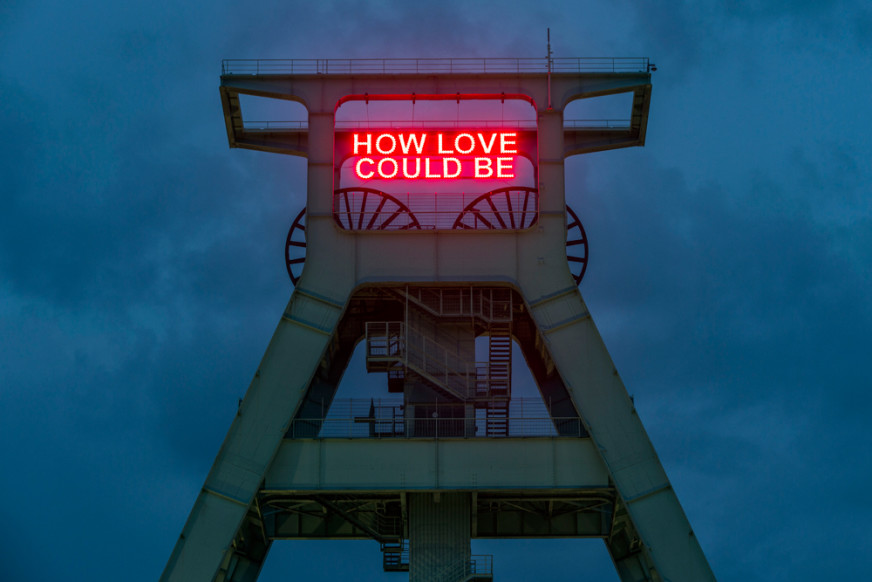
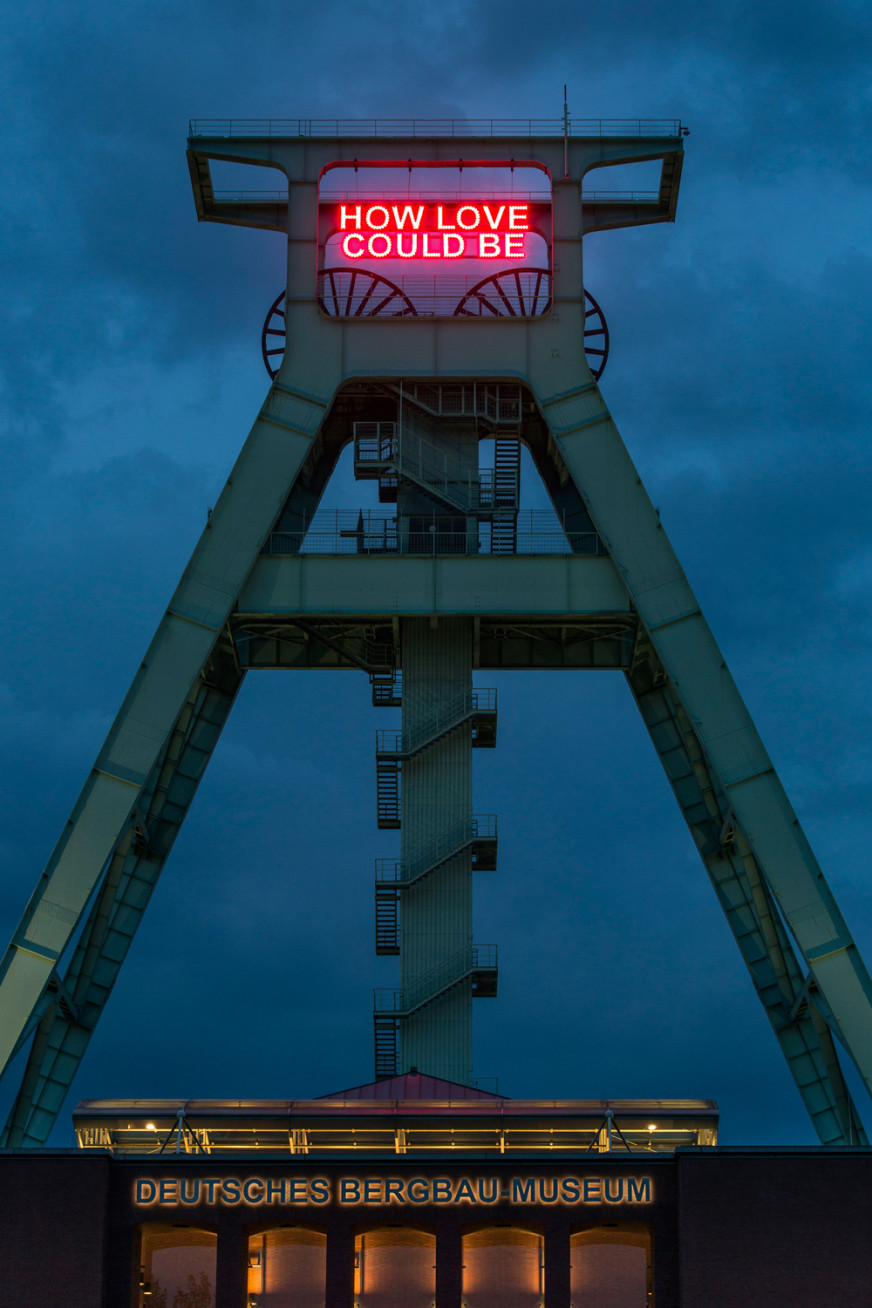
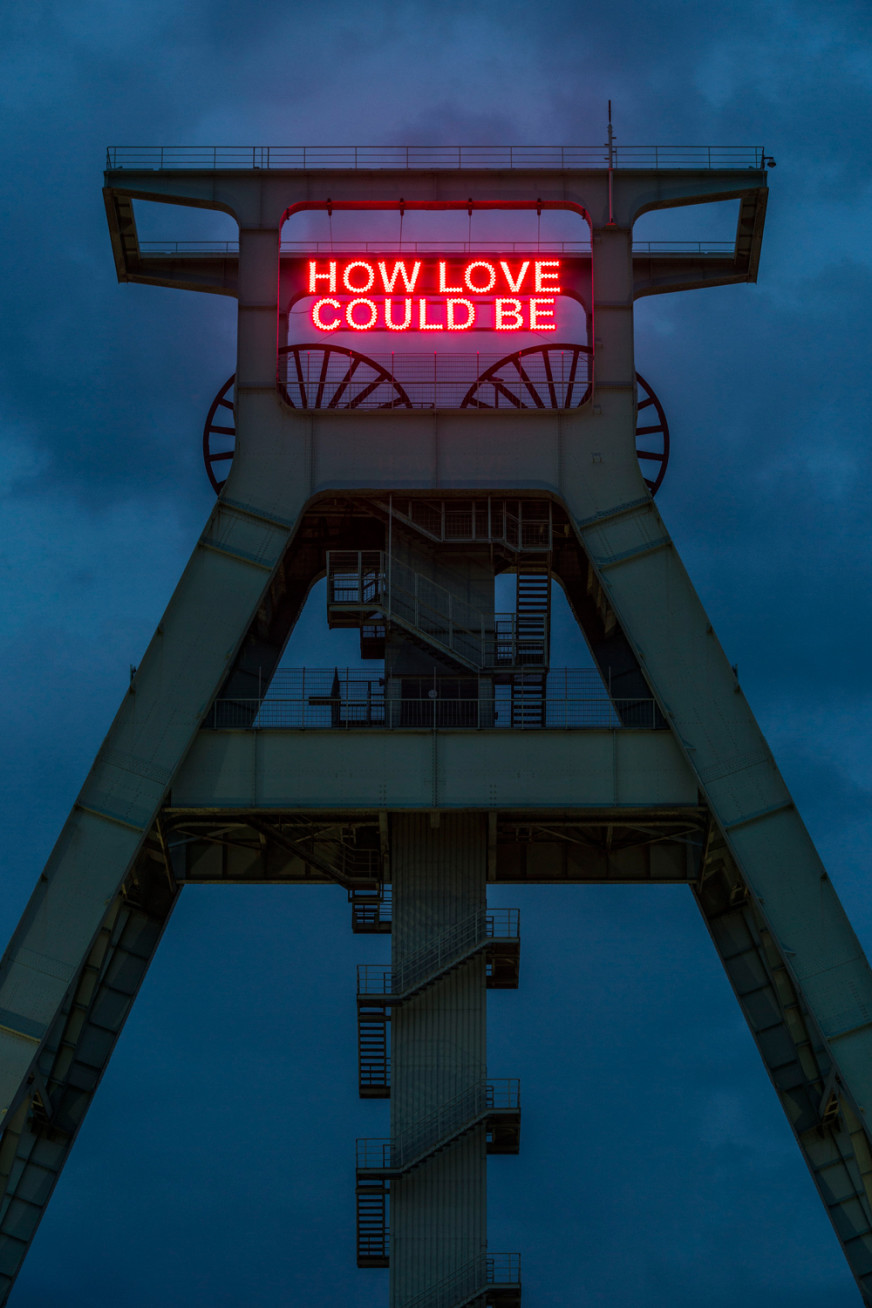
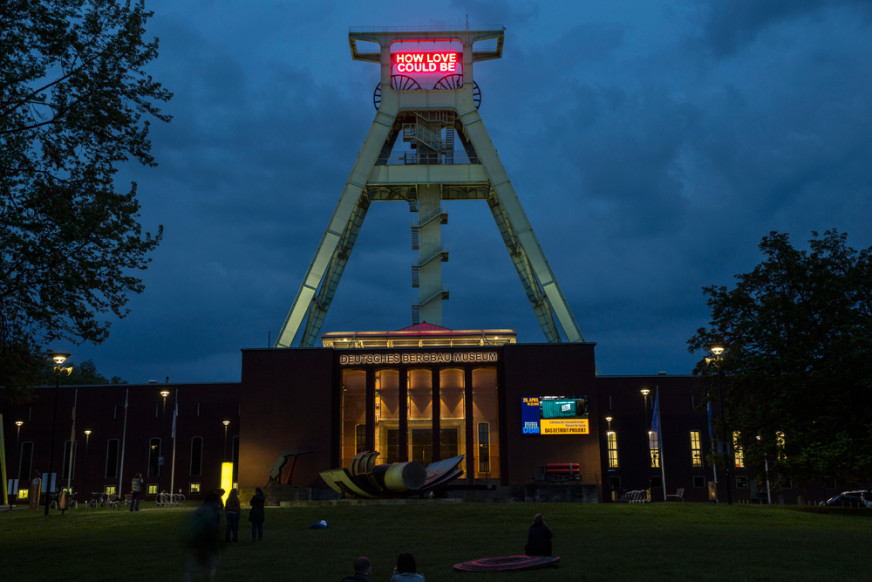




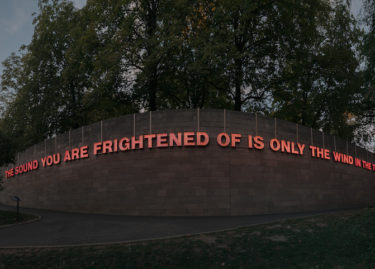 In The Trees, 2020
In The Trees, 2020